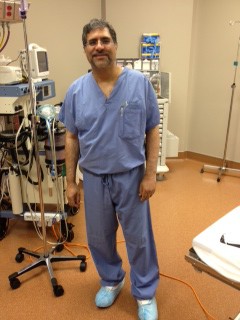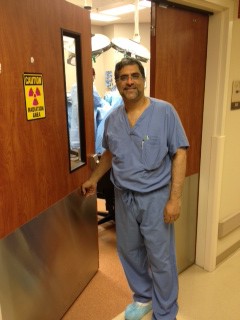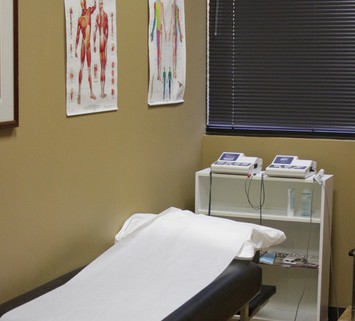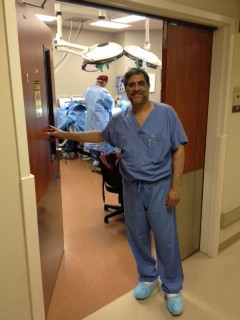Several people suffer from constant back pain that can interfere with everyday activities. Although people may be experiencing pain, they might not always know what is going on inside their bodies. To learn more about what spinal stenosis bulging disc treatment is and how to permanently relieve pain, continue reading.
What is Spinal Stenosis?
Spinal Stenosis is the narrowing of the spinal canal. When this happens, it creates less space between the spine and nerves. Spinal stenosis is caused from spinal degeneration and from wearing and tearing from osteoarthritis, which is typically seen in older individuals. Other causes of spinal stenosis include the formation of bone spurs, bony overgrowth, thickened spinal ligaments, and bulging discs. All of these things can apply pressure on the nerves that go up and down the spine and in turn cause pain.
Symptoms of Spinal Stenosis
If the narrow spinal canal is applying pressure to the spinal cord, it will cause pain symptoms. Symptoms caused by spinal stenosis depend on the location where the narrowing is occurring. The most common area of spinal stenosis affects the lower back area or the lumbar spine.
Symptoms of lumbar spinal stenosis include:
- Lower back pain
- Tingling or pain either in one or both legs, which can worsen when standing or walking.
- Muscle weakness, pain, or numbness that can spread throughout the legs and backside.
Another area spinal stenosis can affect is the cervical spine, or the neck area of the body. If pressure is applied to the cervical spine, symptoms will include:
- Numbness in the hands and an increase in clumsiness
- Bladder or bowel control difficulties
- Coordination difficulties - trouble with balancing and walking
- Muscle weakness and incoordination of arms and hands
- Fine motor control difficulties and hand-eye coordination
What is a Vertebral Disc?
With a total of twenty-three vertebral discs that make up the column of the spine, discs act as “cushions” between the vertebrae in the spine. These discs are made up of an outer layer of tough cartilage that covers up softer cartilage. Since they are between each bony vertebra, they act as shock absorbers and hold the vertebrae of the spine in place allowing for only minimal mobility of the spine.
What is a Bulging Disc?
A bulging disc is different from a herniated disc because it does not rupture and affects a larger part of the disc itself; between a quarter to a half. When the disc is bulged or becomes enlarged, it applies pressure in the area where it is located between the vertebrae. Bulging discs are not always painful or a cause for concern. Sometimes people may not even know that they have a bulging disc. On the other hand, even though a herniated disc is more likely to cause pain, a bulging disc if pressed against the spinal nerves can cause a severe amount of pain and can become unbearable.
A few common symptoms of a bulging disc, when pressed against the spinal cord or nerves in the body, can include pain, numbness, and muscle weakness. There is also a chance that pain from a bulging disc can feel like it is coming from the kidneys, abdomen, or other parts of the body.
If there is a bulging disc in the mid to upper back or the thoracic spine, pain can include:
- Numbness, muscle weakness, tingling in either one or both legs
- Bowel or bladder changes
- Paralysis from the waist down
- Spastic reflexes in either one or both legs
For a bulging disc in the cervical spine, symptoms can include:
- Pain near or surrounding the shoulder blade
- Pain in the upper arms, forearms, and/or fingers
- Increased tension and pain while moving the neck
Physical Exams & Scans
A physical exam must be completed to assess a patient’s pain and an X-ray, MRI, or a CT Scan may be recommended by your doctor for further analysis. An X-ray will help show any changes that could cause narrowing of the spinal canal such as the presence of bone spurs. After the X-ray is taken, an MRI is the most common test for diagnosing a bulging disc and can detect any damage towards discs and ligaments. It also is helpful for showing a more detailed view if and where the nerves are being pressured throughout the spinal cord. A CT Scan can also be used for outlining the spinal cord and nerves to show herniated discs and bones spurs after a dye has been injected into the body.
Nonoperative Treatments
After both the physical exam and scans are completed, a doctor will have a better understanding of a patient’s pain and may recommend any of the following nonoperative treatments for pain management:
- Anti-inflammatory medications
- Physical therapy to avoid muscle weakness
- Dieting or weight control
- Steroid injections
Minimally Invasive Spine Surgery
If nonoperative treatment does not help and pain continues to worsen, surgery will be the best option. The purpose of minimally invasive spine surgery is to relieve pressure from the spinal cord or nerve roots. This will create space in the spinal canal, and diminish pain. Decompressing the area that is causing stenosis will relieve spinal stenosis symptoms and will not affect healthy tissue surrounding the area, and will allow for overall shorter recovery time.
Find Permanent Relief
Now that you know about spinal stenosis bulging disc treatment, find permanent relief with help from Texas Spine Center. Dr. Siddiqi and his staff are dedicated to their patients and offer personalized care options to treat each individual’s specific pain. Dr. Siddiqi is skilled in both laser spine surgery and minimally invasive spine surgery in Houston and will offer the correct treatment for you.



